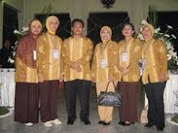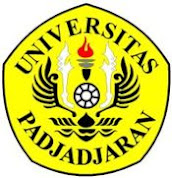Jumat, 11 Desember 2009
PTSD is an anxiety disorder commonly seen in individuals who have survived extremely stressful situations such as war, assault, or other events that lead to severe psychological trauma. There is some evidence of a genetic association – an intriguing paper by Binder et al. (2008) links PTSD with genetic polymorphisms at the stress-related gene FKBP5. A number of recent studies (e.g. Bryant et al., 2005) have used functional magnetic resonance imaging (fMRI) to link PTSD with specific brain networks including the anterior cingulate and amygdala. Dr. Morey’s group essentially replicates these findings, with PTSD patients showing greater activity in emotion-processing areas (the cingulate and amygdala are often associated with fear-processing) and reduced activity in the prefrontal cortex (often associated with vigilance and monitoring).
The diagnosis of posttraumatic stress disorder (PTSD) first appeared in 1980 in the third edition of Diagnostic and Statistical of Mental Disorders (DSM-III). It underwent some revision in 1987 in the revised third edition (SM-IV) defines it in six parts: (1) the person must have experienced, witnessed, or been confronted with an event involving death, serious injury, or a threat to the physical integrity of the self or others. (2) the traumatic event must be persistently reexperienced in the form of distressing images, thoughts, perceptions,dreams, or reliving; intense psychological or psychological reactivity may also be present since the trauma and numbing of responsiveness must be present since the trauma. (4) persistent symptoms of increased arousal should be present since the trauma. (5) duration should be at least four weks. (6) the disturbance should cause clinically significant distress in social, occupational, or other important areas functioning.
NURSING PROCESS FOR CLIENT WITH POST TRAUMATIC STRESS DISORDER
For the client who develops fear, terror, dread, or helplessness following exposure to a traumatic event (rape, war, natural disaster, abuse, experiencing or witnessing serious trauma or violence). Symptoms range from emotional “numbness” to vivid nightmares in which the traumatic even is recalled.
NOC:
Suicide self-restraint, Anxiety level, Fear level, Abuse recovery, Emotional, Physical or Sexual, Coping, Depression level, Impulse self-control.
NIC:
Suicide prevention, Anxiety reduction, Anger control assistance, Simple relaxation therapy, Coping enhancement, Mood management, Support system enhancement.
ASSESMENT DATA
Related factors (Etiology)
• Overwhelming anxiety secondary to:
- War experiences/military combat
- Natural disaster (earthquake, hurricane, tornado, flood)
- Personal assault (rape, incest, molestation, beatings, abuse)
- Kidnap of self or significant others
- Catastrophic illness or accident
- Prisoner of war death camp hostage experiences
- Learning of a loved one’s serious accident, injury, or maiming
- Destruction of home or valued resources
- Witnessing a serious accident or act(s) of violence (car crash, building collapse, mother being beaten, killing of family member)
- Viewing a scene in which there are dead and/or maimed bodies (aftermath of war, plane or train crash, earthquake)
- Threat to physical and emotional integrity (all of the above)
• States that recollections are accompanied by feelings of dread, terror, helplessness, powerlessness, cardiac palpitations, shortness of breath, and other symptoms of emotional physical reactivity.
“I feel out of control and terrified when I recall the event”
“I get out of breath and my heart beats faster and faster”
“I have a sense of doom, as if something terrible is going to happen”
• Describes recurrent dreams or nightmares in which vivid details of traumatic event are relived or reenacted.
“I had another horrible nightmare last night and went through the same trauma and anxiety all over again”
• Express feelings of “numbness” detachment, or loss of interest toward people and the environment (generally occurs immediately after the traumatic event)
• Demonstrates avoidance or lack of responsiveness toward stimuli associated with the traumatic event (in rare instances, may experience psychogenic amnesia)
A war veteran avoids hospitals, injured persons, bandages, and blood.
An accident victim demonstrates a flat affect while listening to a news report describing a traumatic event.
• Demonstrates symptom of psychogenic reactivity (anxiety symptom) when exposed to events that resemble or symbolize the original trauma.
A young woman develops fear, dread, or terror when she attempt sexual intimacy with her partner because it reminds her of when she was raped.
A prison camp victim experiences sympathetic nervous system stimulation (rapid heart rate, shortness of breath, nausea, diarrhea) while sitting in a cell-sized room.
A war veteran who fought in a hot, humid climate experiences dread or terror when exposed to similar weather many years later.
• Demonstrates symptom of increased arousal (inability to fall asleep or remain asleep, hypervigilance, exaggregated startle response).
• Manifest unpredictable episodes of explosive anger or aggression.
• Verbalize inability to concentrate or complete task.
“I’m too distracted to make my bed or go to an activity”
“I can’t concentrate on my craft”
“I can barely shower and groom myself”
• Relates inability to express angry feelings.
“I feel as if I might explode, but I can’t let it out”
“I can’t begin to express my anger”
• Expresses thoughts of self-blame and guilt regarding a traumatic event.
“If only I had locked the door, it wouldn’t have happened”
“If I had been there on time, it wouldn’t have occurred”
• Verbalizes anger at others for perceived role in traumatic event.
“If they had helped more, he wouldn’t have lived”
“If they have called for help right away, I wouldn’t be so badly injured”
OUTCOME CRITERIA
• Clients verbalizes awareness of psychologic, and psychologic symptom of anxiety that accompany recollections of a past-traumatic event.
• Identifies situation/event/images that trigger recollections and accompanying responses of past traumatic experiences (small or enclosed spaces, hot or cold climate, argument or fight, sexual intimacy)
• Communicates and interacts within the milieu to control and manage anger and relieve thoughts of self-blame and guilt.
Communicates thoughts/feelings to a trusted person.
Problem solves source of thoughts/feelings.
Participates in group activities.
Engages in physical activities/exercise.
• Use learned adaptive cognitive-behavioral therapeutic strategies to manage symptom of emotional and physical reactivity.
Attending process groups for group therapy.
Slow, deep-breathing technique.
Progressive relaxation exercise.
Thought, image, and memory substitution.
Cognitive restructuring.
Systematic desensitization.
Behavior modification.
Assertive behaviors.
• Relates understanding that anger, self-blame, and guilt are common in person who have experienced or witnessed traumatic events in which others were injured, assaulted, or threatened.
“I realize others who gone through this have had similar reaction”
• Verbalizes ability to control or manage symptom of emotional and physical reactivity that tend to occur during recollections of the traumatic event.
“I can deal with my anxiety much better now”
“My symptoms are much less troubling now”
“I feel more in control of my reactions”
• Demonstrates ability to remain significantly calmer when exposed to situations or events that symbolize or are similar to the original traumatic event (displays relaxed affect and facial expression; smooth, nonagitated psychomotor movements).
• Expresses relief from anger, self-blame, or guilt related to the traumatic event.
“I’m not so hard on myself anymore; I realize things happen that we can’t control or change”
“I’m not overcome with anger anymore ”
• Verbalized realistic hopes and plans for the future with absence of suicidal thoughts.
“I’m going back to my old job; I have a lot of reasons to live; my family needs me”
• Identifies significant support systems (family, friends, community group).
• Identifies the normal progression of grief symptoms that may be a part of the traumatic event (shock, denial, awareness, anger, restitution, acceptance).
• Verbalizes self-forgiveness and forgiveness of others for reactions or nonactions perceived by the client to have influenced the traumatic event.
“I can finally forgive myself for being human”
“they did what they could to help at time”
“it’s time to forgive and get on with my life”
DIFFERENTIAL DIAGNOSIS
- GENERALIZED ANXIETY DISORDER. The hyperarousal symptoms described in teh D criteria set are similar to those present in generalized anxiety disorder buL than disorder lack a traumatic origin and tehe intrusive symptom found in criteria B. Nonethelss, if any anxious patient presents with ready startle, remain on guard, and does not respond to teh usual measures for generalized anxiety disorder, the clinican should consider a diagnosis of PTSD.
- DEPRESSION. Depressive features of reduced interest, estrangement, numbing poor consentration, and insomnia occur in PSTD. Intrusive trauma-bound symptom are not a feature of depression. However, after eksposure to trauma , post traumatik reactions are seen, and the clinician needs to adress the traumatic component. Polysonographs and neuroendocrinr studies may help in defferential diagnosis of PSTD and major depressive disorder.
- PANIC DISORDER. Panic attacks resembels the autonomic hyperactivity in PSTD (chriteria D). O distinguish teh two, the interviewer should establish whether the panic attacks are related to the tarauma or to reminders of it.
- OBSESIVE-COMPULSIVE DISORDER . PSTD and obsesive-compulsive disorder both share the occurrence of repetitive, distressing recollections, images, or thoughts. To distinguish bertween the two disorder, the clinical must obtain a careful history, asking about the occurrence of the trauma and establishing wheter the intrusive phenomena are thematically linked to the event.
- DISSOCIATIVE DISORDERS. Flahsbacks, nimbing, and amnesia may suggest dissociative disorder. When those symptomms are prominent or presenting features, the clinical must elicit a clear history of the additional intrusive, avoide, and hyp a rarousal features that occur in PSTD but not in dissociative
- BORDERLINE PRERSONALITY DISORDER. The dignosis of borderline personality disorder is often made when PSTD is a more appropiate diagnosis or, at least, a necessary concomitant diagnosis. A clinical who makes the diagnosis of borderline personality disorder must inquire further into possible early trauma and ensuing symptom.
- MEDICAL DISORDER. After a patient sustains a head injury, the clikical must evaluated the degre of any brain damage and its possible contribution to some of the symptoms. Close colaboration with a neurologist in advisable.The clinical should also clarify the role of alcohol or psychoactive substance intoxication and withdrawal, since those disordr can aggravate PTSD symptoms.
- FACTITIOUS DISOORDER. PSTD must sometimes be distinguised from fastitinguisted ftom factitious disorder. Helpful clues are corroborative evidence that trauma did occur and that the patient is usually sistressed about the trauma and often reluctant at first to discuss its details. Factitious symptoms often vary in response to the immediete environment.



EVALUATION
• Evaluation of outcome criteria is a critical method that determines:
- Client (individual, family, community) progress and response to treatment
- Effective use of the nursing process
- Acountability for the nurse’s standards of care
REFERENCES
Fortinash, Katherine M. 1995.Psychiatric Nursing care Plans—2nd ed.St.Louis, Missouri : Mosby
Kaplan, I.Harold.,Saddock J.,Benjamin.1995.Comprehensive textbook of Psychiatry/VI.Baltimore, Maryland : Williams & Wilkins
Fortinash, Holoday Worret.2007. Psychiatric Nursing Care Plans fifth edition.St.Louis, Missouri : Mosby Elsevier
Fontaine, Karen Lee. 1995.Mental Health Nursing.Menlo Park : Addison Wesley Longman, Inc.
Clinton, Michael.Nelson, sioban.1995. Mental Health and Nursing Practice.Sydney : PRENTICE HALL
Stuart & Sundeen.1995. Principles and practice of Psychiatric Nursing. St.Louis, Missouri : Mosby
Vacarolis, Elizabeth M. 1994.Foundations of Psychiatric-Mental Health Nursing.Philadelphia, Pennsylvania : W.B. Saunders Company











